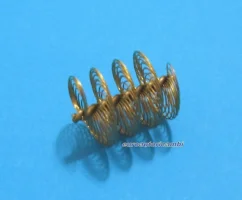Fun fact: if you never change your oil filter then it clogs and becomes a restriction limiting oil flow and causing your engine to DIE. Therefore you should never run an oil filter!
Maybe you're getting hung up on terminology? "catch can" is a generic term, like "car", and doesn't refer to a specific design. Sometimes there's a more specific label, like "oil mist separator" and whatnot, but we're talking about aftermarket performance marketing. The manufacturers will say whatever they damn well please, so you have to look at the product yourself to see what it actually does and how well it might do it. Some "catch cans" are just beer cans with hoses. Some are very complex and very efficient. Most are somewhere in the middle.
I tried to watch that video but I don't think he ever said that you shouldn't run a catch can. He's trying to *sell* catch cans. He even says the plain ones with no media won't cause problems but won't be as helpful.
Are you worried about the can getting clogged? There's a kernel of truth in there, somewhere, maybe, but it's not actually applicable to the situation. The volume of airflow is very -very- low. Something like a slight breeze. So the can doesn't need to be very interesting to be able to flow that amount of air and help catch oil mist. Like anything else, as long as you actually do maintenance and keep things clean, it'll work just fine. Also, crankcase ventilation is operated by intake vacuum, so the pressure differential is what moves the air through the crankcase.
As for WOT, the first topic is just how long, exactly, do you keep the engine at WOT? Regardless, this is when crank vapors push back out the ""clean"" side of the system, which is why several vendors recommend or specifically design a dual-can system for those scenarios. I ran one for a while, never got a single drop, so removed it. YMMV. Something would have to to terribly, horribly, wildly wrong for pressure to actually build in the crankcase. Even if it did, it would quickly find a way out, because the design of the crankcase does not attempt to hold in pressure at all.
If you're building a true high performance engine then you don't use a catch can - you run an evacuation system that actually pulls a slight vacuum (just a few inches of mercury) on the crankcase at all times. That's been shown to give just a few more HP, the theory being it helps ring seal. But those just dump the mist overboard, usually passing through a rag zip-tied around the outlet.




